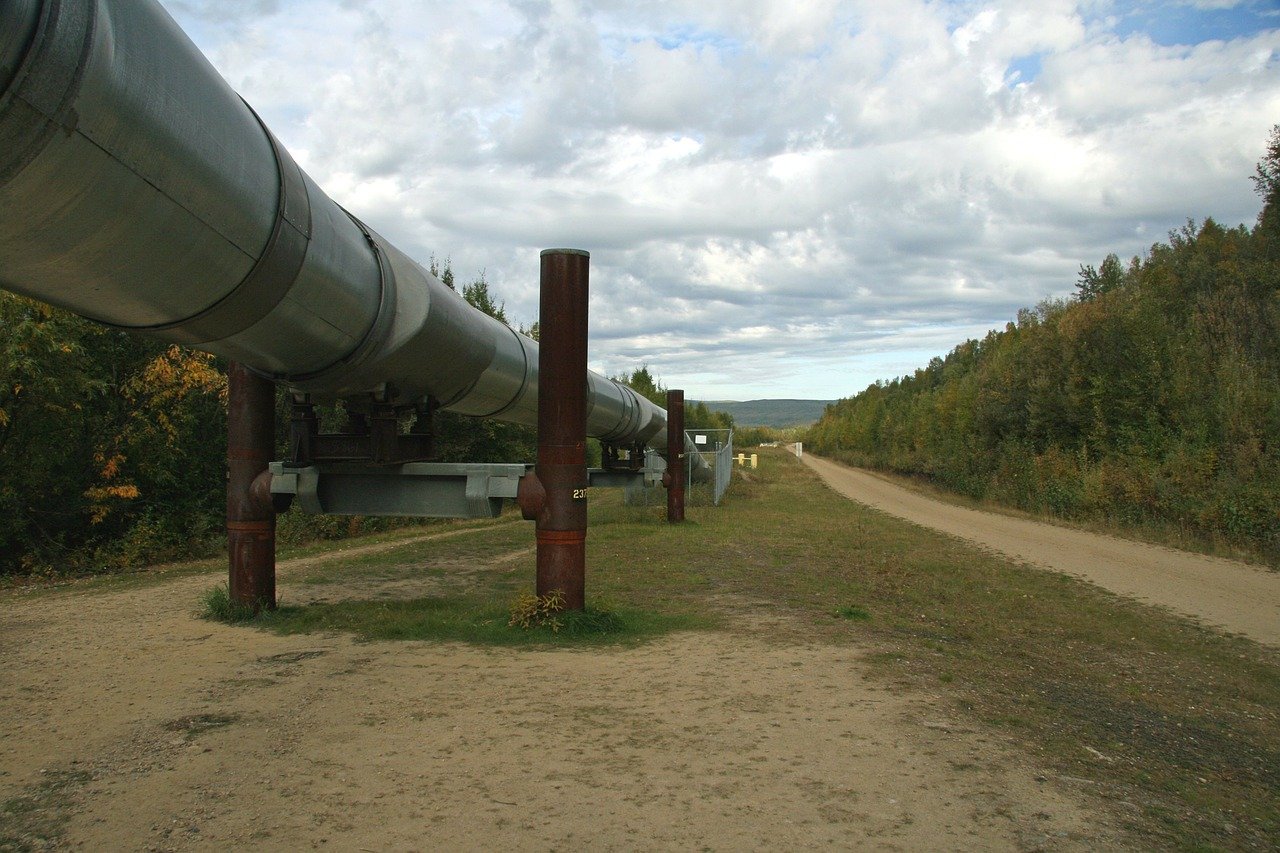Does Italy need new infrastructure (pipelines and LNG terminals) to replace Russian gas?
No.
Gas consumption in Italy has never recovered from its peak in 2005. Since then – with the exception of annual fluctuations due to economic cycles – gas demand has been following a structural downward trend that is however still insufficient to meet Italy’s decarbonization goals. A new dash for gas infrastructure, implying long-term costs and considerable lead times for construction, is not fit for purpose against a gas crisis that could turn into a bubble or otherwise normalize in a shorter time frame than infrastructure delivery.
Immediate gas savings by next winter could lead to a drop in domestic gas demand equal to about one-fifth of Russian gas imports. The National Agency for New Technologies, Energy and Sustainable Economic Development (ENEA) published last February a list of 20 daily behaviours capable of saving up to 10% on bills. ENEA’s President announced in mid-June proposals for a reduction in winter gas consumption, which will be additional to the measures already undertaken by the Government to date [1].
Further, there are expected savings from energy efficiency measures already included in the Italian National Energy and Climate Plan estimated at about 2.3 bcm by 2025. These do not take into account an additional 5.5 bcm expected from the Fit for 55 package and the RePowerEU plan. Taken together, these measures account for the equivalent of one-fourth of Russian gas imports.
Critically, the sector that will lead to the largest gas savings will be the power sector. The EU 2030 targets imply for Italy achieving a share of renewable electricity production of about 70%, compared to the current 35-40%. This adds to Italy’s commitment within the G7 to achieve a predominantly decarbonized electricity system in 2035. The Minister of Ecological Transition, Roberto Cingolani, considers feasible and sustainable the estimate of the main electricity-utility association Elettricità Futura’s plan to install 85GW of new renewable capacity by 2030, through which Italy could achieve a share of 84% renewable electricity generation. The share of gas-fired generation would therefore considerably reduce before the end of the decade.
As of mid-June 2022, the only gas import infrastructures in Italy used at almost full capacity are the LNG terminals (La Spezia, Livorno and Rovigo, where liquefied gas ships dock) and the TAP pipeline bringing Azeri gas to Puglia.
Any new gas infrastructure to accommodate new LNG supplies would mostly come into service too late in relation to falling Italian and European gas demand, but then continue to weigh on the economy and energy costs for decades. Further, infrastructure once built tends to lock in the use of the supply chain to which they are dedicated, in the same way that subsidies to gas-fired plants displace alternative technologies that provide flexibility services to the electricity grid.
In addition to inconsistency in timing and volume, new gas infrastructure also risks “tying our hands” in a way that is undesirable in terms of geopolitical scenarios. Indeed, assuming that the pipeline from Russia will stop being used indefinitely, even if geopolitical conditions change, expose new investments to a geopolitical risk that must be taken into account. The nature of sanctions and trade retaliation is first and foremost to try to normalize the situation – certainly not to cut bridges forever by putting the other side in the dangerous condition where it has nothing left to lose.
Does Europe need new gas infrastructure? And what role can Italy play?
According to the Artelys study “Does phasing-out Russian gas require new gas infrastructure?” from May 2022, carried out through a simulation model of the European energy system, all that would be needed to do without Russian gas would be an increase in regasification capacity in the Baltic countries and Finland, or just the controlled management of limited rationing. Nevertheless, much of the response provided by governments to the price crisis so far consists of a rush to new investments in gas infrastructure, without any concern for their economic efficiency. This response, presented as necessary to avert blackout scenarios, ignores both consumer (business and private) reactions to high prices and the effects of climate policies already undertaken by the EU.
Regarding consumers’ reaction, many customers have no interest in consuming the same amount of pre-crisis energy at a wholesale price that has quintupled in the meantime. Consumers, especially after having time to organize, save energy in reaction to exceptionally high prices. In other words, it is irrational to put in place costly policies to allow a level of consumption that is no longer desirable at current prices. Short-term savings will be complemented by structural savings from increased efficiency achieved through investments triggered precisely by high prices.
Regarding policies on climate and energy transition, new capacity from renewables – in parallel to the progressive electrification of consumption – will bring gas consumption in the EU down to about 400 bmc in 2025 compared to about 480 in 2019, according to Artelys. This reduction alone is worth about half of Russian gas imports in 2019 and will be compounded by lower consumption, additional policies and diversification of gas supplies. We estimate that actions under the European Fit for 55 and REPowerEU plans, aimed at meeting the 2030 climate targets, will reduce European gas demand by 40% by 2030.[2]
In the context of Europe’s single (and interconnected) market, it is unthinkable to imagine an “autarkic” use of energy. Even with the prospect of becoming a gas transit “hub” towards Central Europe, building high-cost infrastructure in Italy would mean paying a high price for import capacity for the European market, which would not make economic sense due to its undergoing transformation
What does it mean for a gas infrastructure to be “hydrogen-ready”? What is its technical feasibility? What is its economic efficiency?
A gas infrastructure is considered “hydrogen-ready” if it can accommodate gas and hydrogen indifferently.
Current gas transportation, distribution and storage systems are mostly only compatible with modest amounts of hydrogen mixed with gas (which is mainly methane gas). The same is true for gas use: it is now mostly through appliances (boilers, stoves, etc.) that are not compatible with a hydrogen supply.
If new gas assets were compatible with 100% hydrogen use, these would make sense only in the as-yet-undefined case that current gas demand sites match future hydrogen demand sites.
However, compared to a system optimized for pure hydrogen (of which there are already thousands of kilometers in the world), a multipurpose infrastructure (thus capable of transporting both hydrogen and gas) is more expensive, implying that some of its costs will be lost anyway once decarbonization is completed.
But the greatest economic issue of a multipurpose network strategy concerns the fact that it is by no means a foregone conclusion that future hydrogen transport needs will be similar in type and quantity to those of gas today. Indeed:
- Hydrogen, if it is to be useful to the decarbonization goals of the economy, will be produced from renewable sources in places mostly different from the current gas production wells and will need different routes that are less tied to major hubs of origin.
- The volume of hydrogen to be moved will relate only to energy uses whose decarbonization for direct local use of renewable sources is not possible.
- Even when the transport of hydrogen between hubs is in some cases necessary in order to take advantage of high renewable availability far from consumption, this needs to be stress-tested against the option of transporting that energy in electrical form (via cable) for use or storage at the place of consumption. In the case of North Africa, for example, an Italy-Tunisia interconnection is already planned both in Terna’s plans and as part of European projects of common interest.
- It is by no means given that hydrogen will generally be the most efficient non-electric carrier for long-distance transfer of energy from renewable sources. IRENA’s paper “Global hydrogen trade 2022” points, for example, to the use of ammonia-based carriers as an equally promising solution.
For these reasons, making current or future gas infrastructure hydrogen-ready would prove to be an unnecessary waste of resources in most cases.
Does hydrogen serve the decarbonization of energy and industry?
Hydrogen is not a primary source of energy but a carrier of it, useful for decarbonization for two reasons:
- In the electricity sector, it will likely be used to store energy from renewable sources at times and places when it exceeds demand. This storage, which in the short term can be done with batteries or through demand flexibility, at seasonal times requires different solutions, such as precisely hydrogen, which can be produced by hydrolysis from water through renewable input, stored and finally used with or without a new transformation into electricity.
- In the heavy manufacturing sector, hydrogen will replace fossil sources in some production processes for which conversion to electrical uses is not yet efficient. These are usually high-temperature industrial processes with very low potential consumption compared to current gas use. For example, in the steel sector we estimate a requirement of 0.5 Mt of hydrogen per year assuming a production level of 8 Mt of steel/year.
The fact that hydrogen is needed does not mean that it makes sense to create an infrastructure to transport and store it similar in size and characteristics to the current gas infrastructure.
Who would pay for new infrastructure and gas supplies?
What percentage of the cost of energy is paid for in bills and what with taxes is a political question. In general, the higher the share in the bill, the greater the empowerment of consumers, the greater the incentives for efficiency, and the greater the chances of making effective pricing policies to discriminate between fossil and non-fossil energy.
What can certainly be said is that taxpayers or consumers will pay every last euro, for decades. This includes both the costs of the infrastructure we decide to build today in the wake of the emergency and the long-term commercial supply commitments guaranteed in any form by the state. Further, as consumption decreases, the weight of these charges per unit cost of gas, and thus its function as a “transition fuel”, will become less and less sustainable. All these costs moreover would add to those of decarbonization, whose process risks slowing down.
The government is considering support for new long-term supply contracts. What are the consequent economic and climate risks?
First, there is an issue of transparency. Since gas is purchased by companies and not by governments, whenever a government provides guarantees to commercial deals, it exposes itself to risks of state aid and general opacity and conflicts of interest – all the more so if that government is a shareholder in the companies involved.
In terms of climate risk, any commitment – whether on a long-term contract or infrastructure – can make it artificially convenient in the future to prolong gas dependence. This would slow down decarbonization policies, thus leading to a negative double dividend.
Would new domestic gas production serve energy security goals?
The potential impact of new investment in domestic gas production would be on the one hand insignificant, and on the other hand mostly late compared to the times in which Italy aspires to weak itself off Russian gas. For more details see ECCO Q&A: Is it worth developing Italian fossil gas? (in Italian only)
Would new domestic gas production help lower consumer and business bills?
The domestic origin of gas is irrelevant to the price paid by consumers because domestic producers sell gas at the market price, which is now a European price with strong global interrelationships.
Domestic gas is a terrible bargain for the state budget and the community, since in Italy mineral resource extraction concessionaires pay some of the lowest royalties in the world. A real gift of public resources. See ECCO Q&A: Is it worth developing Italian fossil gas? (in Italian only)
Is new domestic and international gas production compatible with climate goals?
No. As the International Energy Agency (IEA) states in its guidance on the global pathway to climate neutrality, new upstream investments are inconsistent with climate policies, all the more so in richer countries. A study [3] by Oil Change International argues that to stay within the 1.5°C carbon budget, even a portion (40%) of the world’s already developed reserves should not be used.
In other words, committing to almost completely abandoning fossil fuels in just over two decades while developing new wells is nonsense, whose costs would weigh on our economies.
Consistently, on the sidelines of COP26 in Glasgow, Italy pledged to avoid new international investments in fossil energy sources from the end of 2022.
What guarantees of stability do alternative gas supplier countries offer to Russia?
If we look at the geographical location of the countries considered key to supply diversification, with the exception of the United States, they are located entirely in the Mediterranean region and Africa. These regions are characterized by situations of fragility and risk, even where the appearance is one of stability. Indeed, behind enduring political leadership, such as that of Algeria, or military leadership, such as that of Egypt, lie numerous elements of economic, political, and social fragility that risk giving rise to new instability.
But more relevant than the element of stability is that of dependency. Even where these regimes manage to survive new waves of dissent and/or systemic shocksm such as food insecurity or the looming debt crisis, the key element which Italy and Europe should reflect upon is that of creating new relationships of dependence. By becoming dependent on these countries for gas supplies, Italy and Europe implicitly give up pressure on them to respect the norms of international law (as in the case of Israeli settlement policy) and human rights (as in the case of arbitrary detentions and enforced disappearances in Egypt). This attitude diverges from the European approach of conditionality towards adopting a principle of non-interference.
What is a strategy for secure, affordable and sustainable energy?
Secure energy comes first and foremost from supplies which we don’t need to worry about serious negative side effects. Fossil energy in a planet grappling with the need to solve the climate crisis is therefore inherently unsafe.
But security is also the reasonable possibility of trusting the continuity of supply and its affordability. And here again the history of fossil fuels (oil first, gas today) is littered with scarcity shocks (and hence high prices) typically followed by severe recessions in the affected economies.
The most widely used indicator of affordability today for comparing energy costs from different sources is the LCOE (Levelized Cost Of Energy), a measure of total costs divided by the expected energy output over the life of the plant. All international observers identify renewable sources (PV and wind primarily) as having the most favorable LCOE.
The good news is that renewables are sustainable not only in terms of the level of costs, but also in terms of the predictability of these costs, because they mostly relate to construction, depreciation and maintenance, with positive impacts on employment and the trade balance of today’s fossil-importing states. In addition, they are sustainable in climate and health terms. Regarding the availability of the grid to accommodate them, at the moment Terna, which is responsible for the development of the Italian national grid and through plans approved by the government, has never questioned its own ability to connect the renewable capacity that will serve to achieve the energy and climate goals to which the country has committed.
Does getting off gas generate employment problems?
Transition in any industry involves the need to relocate resources, human and otherwise, from shrinking to growing activities. At the same time, the best way to sustainably secure future jobs and prosperity is to encourage public and private investment in sectors that hold promise with respect to the community’s strategic goals (such as climate-proofing) and certainly not in those that are declining or incompatible with those goals.
Specifically, in the transition from a gas-based energy system (with a rather centralized supply chain) to one based on renewables (with a plurality of smaller capacity), it is likely that labor intensity will increase and new opportunities will be more distributed across the state, with virtuous distributional and social effects.
Notes to the text
[1] Art.19-quater, DL 17/2022 converted with amendments by L. April 27, 2022, no. 34.
[2] Calculations made by ECCO based on gas savings from increased renewables and energy efficiency shown in the REPowerEu Plan as additional to Fit for 55 (see table page 6 of the Communication). For 2021 EU gas consumption see IEA.
[3] ‘Existing fossil fuel extraction would warm the world beyond 1.5º C,’ study published in May 2022 in the journal Environmental Research Letters by Oil Change International with university researchers and think tanks from five countries
IMAGE CREDITS: David Mark – Pixabay






